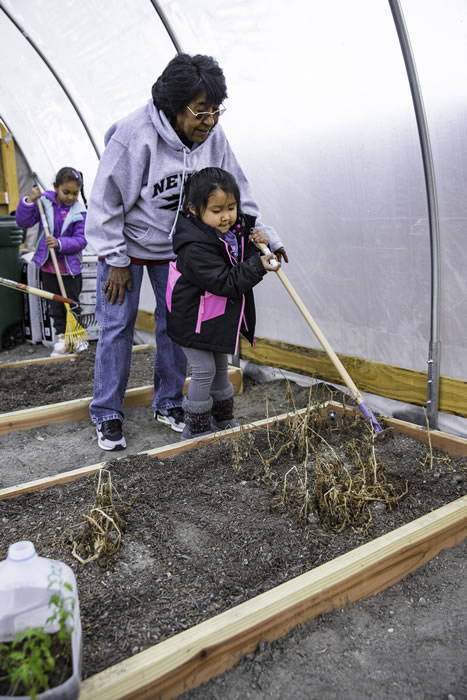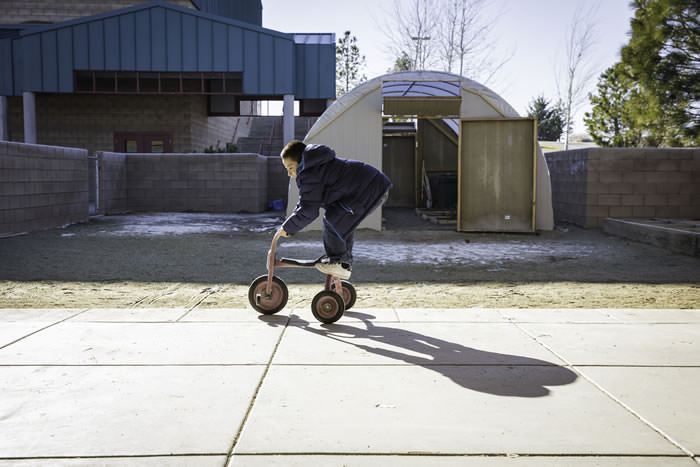edible notables
ROOTS ROCK
New program teaches children how to grow and enjoy produce.
WRITTEN BY SARAH PARKS
PHOTOS BY SHAUN HUNTER
A small group of young children stands huddled inside the hoop house, an oblong structure filled with garden boxes and sprouting green buds. With spades and rakes in hand, they dig into the soil. Teachers hover over them, instructing them how to use the tools and take care of the plants.
Reno-Sparks Indian Colony volunteers, community members, and staff members built the hoop house structure. In it they established planting areas designed to grow vegetables of all kinds, such as tomatoes, watermelons, string beans, and squashes.
Children enrolled in the RSIC’s Hungry Valley Head Start program in Sparks, an early childhood education service, are responsible for taking care of the hoop house and growing the plants.
“Kids are learning new experiences for how to be involved in hoop houses,” says Ramona Sanchez, a childcare aide. “Maybe they don’t have gardens at home, so they are learning here how the produce grows and how it gets to the supermarket.”

Spreading seeds
Children in the program are involved in every step of the process, from planting seeds and pulling weeds to hand watering vegetables and tasting the results.
Although they were given an automatic watering system to use, staff members decided it would be better if the children watered the plants by hand. According to Sanchez, it is important that students be a part of every step of the growing process.
“We take care of the hoop house every day,” Sanchez says. “The (children) are able to see the plants grow before their eyes.”
Growing network
“With the hoop house, we have the opportunity to give our young people really good information about nutrition, and the lessons they learn now could change the way they live in the future,” says Stacey Montooth, RSIC public relations officer.
The USDA reports that residents of most Native American reservations, including the RSIC, have limited access to food. And Native American diets have changed more significantly for the worse than any other ethnic group, which has led to higher-than-average rates of obesity and diabetes among this population. About 44 percent of youths at the RSIC are overweight or obese.
Montooth says that the hoop house helps serve the community in many ways.
First, it is a valuable educational tool for youths that teaches the tenets of responsibility, teamwork, and time management. The children are involved in a hands-on activity that affords them practical skills and knowledge.
It also is a way to get children on the right track to good nutrition. They learn about eating healthy by watching the vegetables grow and taking them back home for their families to enjoy.
The community also is able to get involved with the project by volunteering or helping with the curriculum.
But for the children, it’s also a way to enjoy the outdoors, get a little dirty, and stay healthy along the way.
Sarah Parks grew up in a food desert herself and loves to see the innovative ways that communities can introduce healthy foods and lifestyles, while having a little fun in the process.


